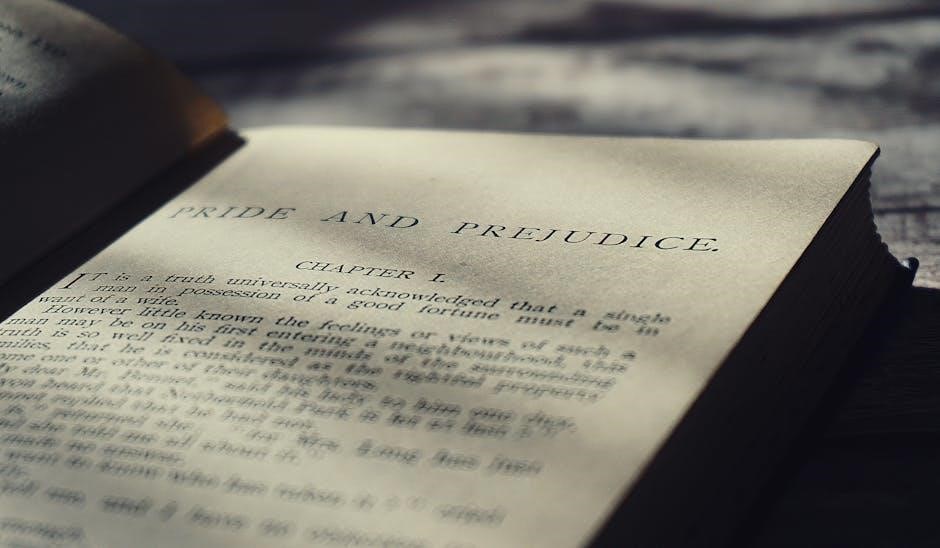The Wackness, directed by Jonathan Levine, is a 2008 coming-of-age film set in 1994 New York City. It follows Luke Shapiro, a teen drug dealer, as he navigates identity, friendship, and first love. The script, available as a PDF, explores themes of self-discovery and urban adolescence with humor and heart.
Overview of the Film
The Wackness is a 2008 coming-of-age comedy-drama directed by Jonathan Levine. Set in New York City during the summer of 1994, the film follows Luke Shapiro, a charismatic yet troubled teenager who navigates the challenges of identity, friendship, and first love. The story is deeply rooted in the cultural and musical vibe of the mid-90s, offering a nostalgic yet fresh perspective on adolescent struggles. With a standout cast, including Josh Peck, Olivia Thirlby, and Ben Kingsley, the film blends humor and heartache to create a relatable and engaging narrative. The script, penned by Levine, is praised for its witty dialogue and genuine portrayal of teenage angst; The film’s success lies in its ability to balance lighthearted moments with deeper themes, making it a charming and memorable watch. The Wackness has become a cult classic, resonating with audiences who appreciate its authentic take on growing up and self-discovery.

Background and Context
The Wackness, released in 2008, is a coming-of-age film set in New York City during the summer of 1994. Directed by Jonathan Levine, the movie captures the essence of 90s culture, music, and urban life. The story revolves around Luke Shapiro, a 17-year-old high school graduate who navigates the challenges of identity, friendship, and first love while dealing with the pressures of growing up. The film’s script, available as a PDF, offers a detailed insight into the narrative, character development, and thematic elements. Set against the backdrop of Manhattan, the film explores themes of self-discovery, relationships, and the struggles of adolescence. The protagonist, Luke, is a drug dealer who grapples with loneliness and uncertainty about his future. His unique relationship with Dr. Squires, a therapist with his own set of issues, adds depth to the story. The film’s nostalgic value lies in its portrayal of the 1990s, blending humor, drama, and a rich soundtrack to create a memorable cinematic experience.

The Script and Its Availability
The Wackness script, written by Jonathan Levine, is available as a PDF online, offering insights into the film’s dialogue and narrative structure. It can be downloaded from various sources, including script repositories and film analysis websites.
PDF Availability and Sources
The script for The Wackness is widely available in PDF format, offering fans and writers a detailed look at Jonathan Levine’s dialogue and narrative structure. It can be downloaded from various online repositories, including script-sharing platforms and film analysis websites. Some sources provide the screenplay for free, while others may require purchase or registration.
One of the most reliable sources is Scripts.com, which hosts the full transcript of The Wackness. Additionally, platforms like Scriptslug and IMDb often feature user-uploaded versions of the script. These PDFs are valuable resources for studying the film’s dialogue, character development, and pacing.
For those interested in the original Sundance cut, some websites offer this version as well. However, availability may vary due to copyright restrictions. Fans of the film can also explore annotated versions, which include director’s notes and scene descriptions;
Overall, the PDF script of The Wackness is easily accessible, making it a great resource for both casual readers and aspiring screenwriters. Its availability highlights the enduring interest in this coming-of-age story.
Structure and Format of the Script
The screenplay for The Wackness, written by Jonathan Levine, follows a traditional script format, making it accessible to readers familiar with screenwriting conventions. The PDF version of the script maintains the standard structure, including scene headings, character names in caps, and dialogue formatted cleanly. Each scene is concise, with vivid descriptions that capture the essence of 1990s New York City.
The script is divided into three acts, with a clear narrative arc that traces Luke Shapiro’s journey. Transitions between scenes are marked with “FADE TO BLACK” or “CUT TO,” ensuring a smooth flow. The dialogue is sharp and reflective of the characters’ personalities, particularly the dynamic between Luke and Dr. Squires.
The PDF also includes stage directions that provide context for the characters’ emotions and the setting. For example, descriptions of Luke’s drug deals and his interactions with Stephanie highlight the film’s blend of humor and introspection. The script’s format allows readers to visualize the story as it unfolds on screen.
Overall, the structure of The Wackness script is straightforward, adhering to industry standards while delivering a compelling narrative. The PDF format preserves these elements, making it a valuable resource for both fans and aspiring screenwriters.

Main Characters and Casting
The Wackness features a compelling cast, with Josh Peck as Luke Shapiro, the charismatic yet troubled teen dealer, and Ben Kingsley as Dr. Squires, his eccentric mentor. Olivia Thirlby shines as Stephanie, adding depth to the story’s emotional core.

Luke Shapiro: The Protagonist
Luke Shapiro, portrayed by Josh Peck, is the dynamic and complex protagonist of The Wackness. A 17-year-old high school graduate, Luke navigates the challenges of adolescence while working as a marijuana dealer in 1994 Manhattan. His journey is marked by self-discovery, as he grapples with identity, first love, and the uncertainties of adulthood. Luke’s character is both relatable and endearing, capturing the essence of teenage vulnerability and resilience. Through his interactions with Dr. Squires and Stephanie, Luke’s growth is evident, showcasing his transformation from a conflicted teen to a young adult with a clearer sense of purpose. The script delves into his internal struggles, making him a memorable and sympathetic figure in the coming-of-age narrative.
Dr. Squires: A Key Supporting Character
Dr. Squires, portrayed by Sir Ben Kingsley, is a pivotal supporting character in The Wackness, offering guidance and mentorship to Luke Shapiro. Their unique relationship, centered around therapy sessions and drug exchanges, adds depth to the story. Dr. Squires, a psychiatrist with his own set of personal struggles, serves as both a father figure and a confidant to Luke. His wisdom and unconventional approach help Luke navigate the challenges of adolescence and self-discovery. Despite his flaws, Dr. Squires’ genuine concern for Luke underscores his importance in the narrative. Their dynamic explores themes of trust, redemption, and the complexities of human connection. Through his interactions with Luke, Dr. Squires reveals his own vulnerabilities, making him a multifaceted and memorable character in the film. His role not only supports Luke’s growth but also enriches the overall story with emotional depth and humor.

Plot Summary
Set in 1994 New York City, The Wackness follows Luke Shapiro, a high school graduate dealing drugs to cope with his struggles. His relationship with Dr. Squires, a psychiatrist, and Stephanie, a girl he admires, shapes his journey of self-discovery and growth.
Main Plot and Narrative Arc
The film revolves around Luke Shapiro, a 17-year-old high school graduate in 1994 New York City, who deals marijuana to cope with his struggles. His journey begins with a sense of alienation and uncertainty about his future. Luke’s life intertwines with Dr. Jeffrey Squires, a psychiatrist in the midst of a midlife crisis, who trades therapy sessions for marijuana. Their unconventional relationship serves as a catalyst for Luke’s self-discovery. The narrative explores Luke’s crush on Stephanie, Dr. Squires’ stepdaughter, adding a romantic layer to his coming-of-age story. Throughout the summer, Luke navigates friendships, family dynamics, and his own identity, learning to confront his insecurities and find his place in the world. The story unfolds with a mix of humor and poignancy, capturing the essence of adolescent struggles and the complexities of human connections. The script delves into themes of growth, loss, and the universal quest for understanding oneself amidst life’s chaos.
Subplots and Their Significance
Beyond the central narrative, The Wackness weaves in several subplots that enrich the story and deepen character development. One prominent subplot involves Luke’s unrequited crush on Stephanie, Dr. Squires’ stepdaughter, which adds emotional complexity to his journey. This subplot highlights Luke’s vulnerability and desire for connection, serving as a counterpoint to his tough exterior as a drug dealer. Another subplot explores Dr. Squires’ troubled marriage and midlife crisis, which mirrors Luke’s struggles with identity. Their parallel journeys create a poignant dynamic, showcasing how both characters, despite their age difference, grapple with similar existential questions. These subplots also underscore the film’s themes of loneliness and the search for meaning. By intertwining these secondary storylines, the script creates a layered narrative that enhances the main plot’s emotional resonance. The subplots not only provide depth to the characters but also highlight the universality of their experiences, making the story relatable and engaging.

Themes Explored
The Wackness explores themes of identity, self-discovery, and friendship, set against the vibrant yet challenging backdrop of 1990s New York City. The script delves into the struggles of urban adolescence, emphasizing the journey of finding one’s place in the world.

Identity and Self-Discovery
At the core of The Wackness lies a profound exploration of identity and self-discovery. Luke Shapiro, the protagonist, navigates the complexities of transitioning from adolescence to adulthood in 1990s New York City. The script intricately portrays his internal struggles, as he grapples with his role as a drug dealer, his relationships, and his aspirations. Through his interactions with Dr. Squires and other characters, Luke begins to question his choices and seek a path that aligns with his true self. The film captures the uncertainty and vulnerability of this journey, offering a relatable and poignant portrayal of youthful self-exploration. The script’s dialogue and narrative structure emphasize Luke’s growth, highlighting the importance of introspection and the challenges of defining oneself in a chaotic world.
Friendship and Relationships
The Wackness delves deeply into the complexities of friendship and relationships, portraying them as pivotal in shaping Luke Shapiro’s journey. At the heart of the story is the unlikely friendship between Luke and Dr. Squires, his psychiatrist. Their relationship evolves from a professional dynamic to a bond marked by mutual respect and understanding. Dr. Squires becomes a guiding figure, offering wisdom and support as Luke navigates his challenges. Additionally, Luke’s relationship with Stephanie, a girl he falls for, adds depth to the narrative. Their connection represents the awkward yet genuine nature of first love, highlighting the vulnerabilities and uncertainties of youthful romance. The script also explores the broader social connections in Luke’s life, including his interactions with friends and acquaintances, which further underscore the importance of human bonds in his growth. These relationships are portrayed with authenticity, capturing the essence of camaraderie and the struggles of building trust and intimacy.
Coming of Age in New York City

The Wackness captures the essence of coming of age in the vibrant yet challenging environment of 1990s New York City. Set during the summer of 1994, the film uses the city as a dynamic backdrop, blending its cultural richness with the protagonist’s personal struggles. Luke Shapiro’s journey is deeply intertwined with the urban landscape, where the sounds of hip-hop and the grit of city life shape his experiences. The film portrays NYC as a place of endless possibilities, yet also one of harsh realities, forcing Luke to confront his insecurities and aspirations. The city’s diversity and energy serve as both a catalyst and a mirror for his growth, as he navigates love, friendship, and self-discovery. Through its depiction of New York City, The Wackness highlights the unique challenges and opportunities of urban adolescence, offering a relatable and authentic portrayal of growing up in one of the world’s most iconic cities.


